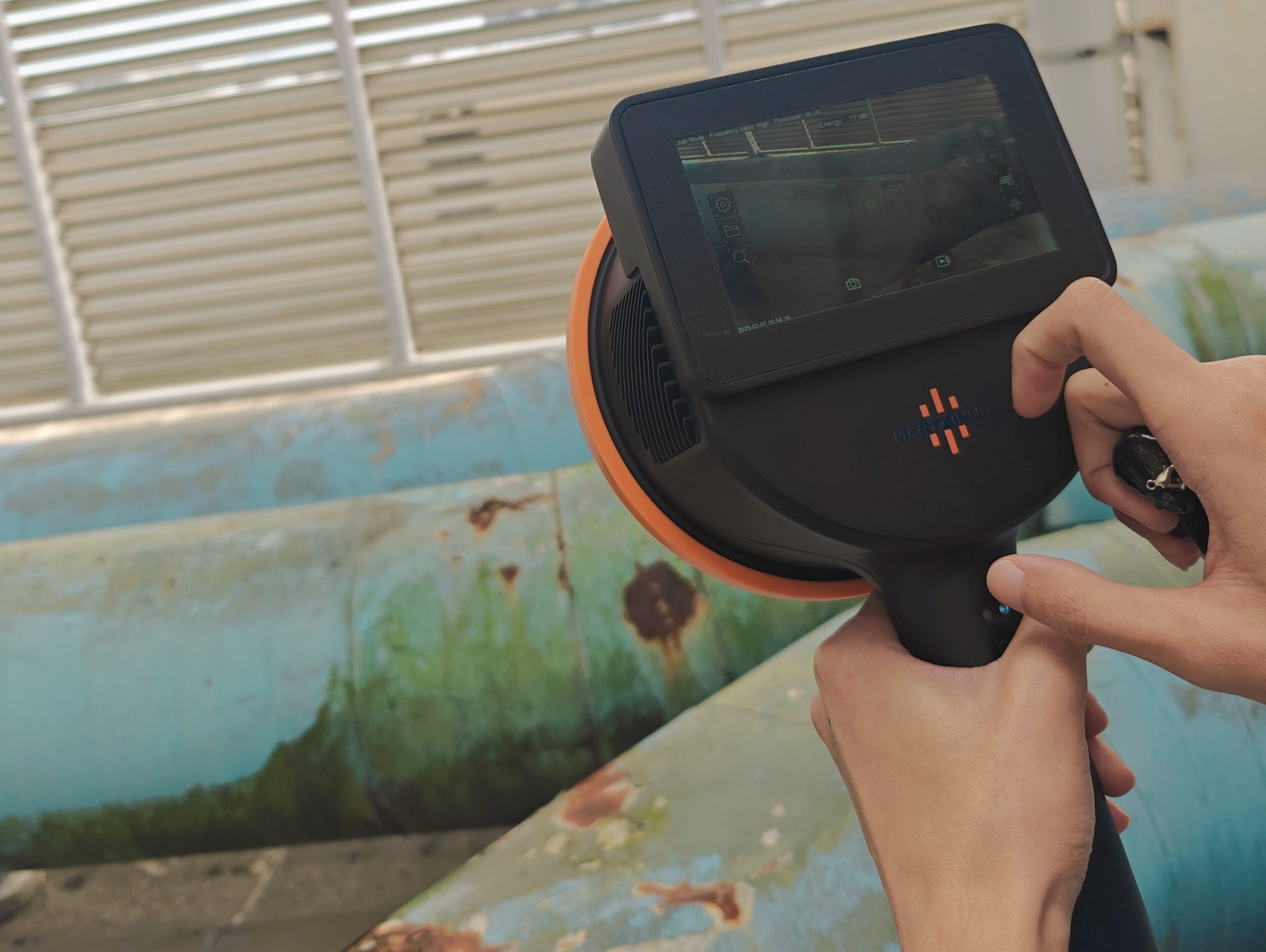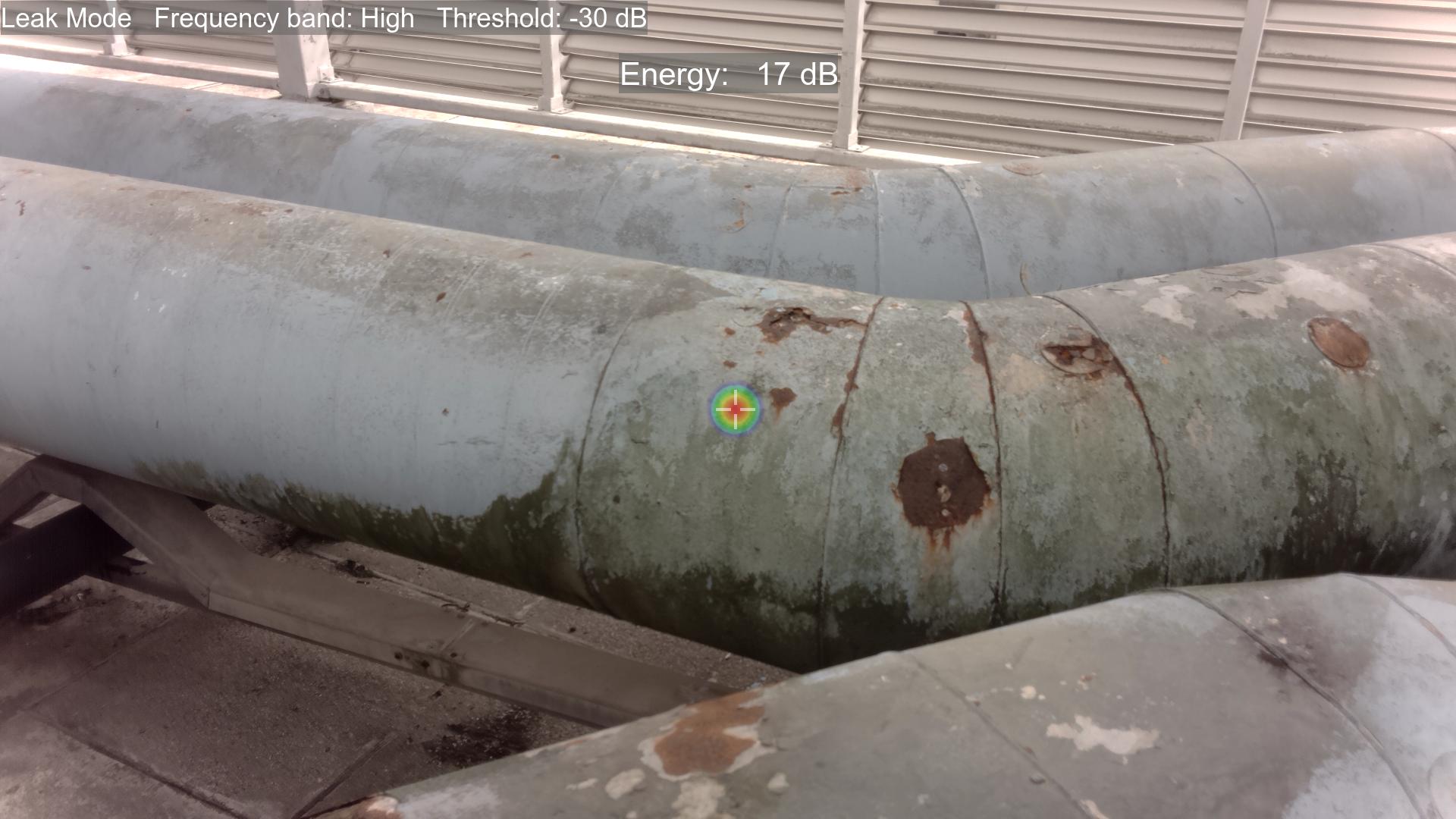Background
Ventilation ducts are critical components of heating, ventilation, and air conditioning (HVAC) systems, responsible for distributing conditioned air throughout a building and expelling stale air. Regular maintenance of these ducts is essential to ensure the HVAC system operates efficiently. One of the most significant concerns is the presence of air leaks, which can lead to substantial energy loss and decreased system performance.

Case Study: Detection of Leaks in Ventilation Ducts Using an Acoustic Camera
Recently, the VISCOY field team was deployed to a local facility’s cooling tower to assist with the identification and localization of potential leaks within a network of rooftop ventilation ducts. Exposure to the harsh Singaporean climate increases the risk of corrosion, making these ducts prone to air leaks.
To detect these leaks, the team employed the Hertzinno HZ-HA-170P Acoustic Camera, a specialized tool designed for acoustic leak detection.
An acoustic camera, or acoustic imager, is a device that visualizes sound sources similarly to how a regular camera captures light. It uses a microphone array to detect sound waves and processes this data to create a visual representation of the sound field. This allows for the identification of noise hotspots, which is particularly useful in industrial and construction settings for detecting air or gas leaks, partial discharge in electrical systems, and other acoustic anomalies.
Due to the presence of compressors and other mechanical systems on the roof, the environment can be noisy. The Hertzinno HZ-HA-170P Acoustic Camera is specifically designed to filter out audible background noise, isolating ultrasonic frequencies associated with air leaks.
Weighing just 1.1 kg, the camera is lightweight and ergonomically designed for one-handed operation. It boasts a detection range from 0.3 to 200 meters, making it ideal for use in industrial environments where accessibility can be challenging.
The VISCOY team successfully identified and located leaks in the ventilation ducts. Additionally, the onboard software quantified the volume of the leaks, providing facility managers with valuable data to assess the extent of energy loss and prioritize repairs.
Although not a concern for this particular application, the HZ-HA-170P is rated for use in ATEX Zone 2 environments, making it safe for use in hazardous settings, such as refineries and petrochemical plants.
Key Benefits of Using the Hertzinno HZ-HA-170P Acoustic Camera:
- Speed: Rapid detection of leaks reduces downtime and enhances operational efficiency.
- Safety: Non-invasive, remote detection minimizes the need for manual inspections in hazardous areas.
- Comprehensive Documentation: Visual data and sound field representations provide clear documentation for further analysis and reporting.
- Ease of Deployment: Lightweight and ergonomically designed for easy, one-handed operation.
Repeatability: The camera’s precise measurements allow for consistent monitoring and leak detection over time.
Conclusion
The use of advanced tools like the Hertzinno HZ-HA-170P Acoustic Camera offers significant advantages for detecting leaks in ventilation ducts and other industrial systems. It enhances operational efficiency, reduces energy loss, and provides detailed data to guide facility management decisions. This case study highlights the importance of using specialized equipment for proactive maintenance in industrial settings, ultimately contributing to energy savings and improved system performance.
Q&A
Click edit button to change this text. Lorem ipsum dolor sit amet, consectetur adipiscing elit. Ut elit tellus, luctus nec ullamcorper mattis, pulvinar dapibus leo.
Click edit button to change this text. Lorem ipsum dolor sit amet, consectetur adipiscing elit. Ut elit tellus, luctus nec ullamcorper mattis, pulvinar dapibus leo.
Click edit button to change this text. Lorem ipsum dolor sit amet, consectetur adipiscing elit. Ut elit tellus, luctus nec ullamcorper mattis, pulvinar dapibus leo.
Click edit button to change this text. Lorem ipsum dolor sit amet, consectetur adipiscing elit. Ut elit tellus, luctus nec ullamcorper mattis, pulvinar dapibus leo.
Click edit button to change this text. Lorem ipsum dolor sit amet, consectetur adipiscing elit. Ut elit tellus, luctus nec ullamcorper mattis, pulvinar dapibus leo.


